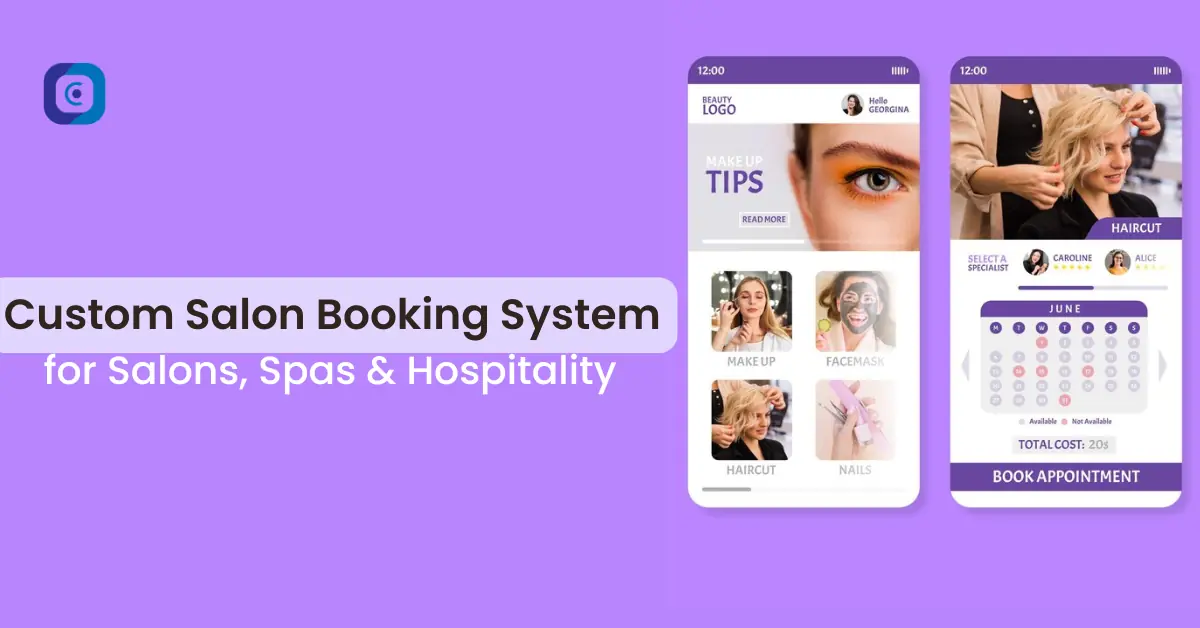Custom Salon Booking System for Salons, Spas & Hospitality

Corporate efficiency and customization are vital in today’s fast-paced world, especially in the beauty and hospitality industries. Whether you own a salon, spa, or resort, a smooth customer booking experience and an efficient administration system are critical to success.
As an IT solution provider, we at OneClick IT Consultancy developed a solution that automates client interactions and provides a highly versatile admin panel that can scale from small to multi-location organizations. This system goes beyond the restrictions of existing platforms like Timely, offering capabilities targeted to the specific requirements of salons, spas, and other similar enterprises.
The Problem with Existing Solutions
Many salon operators use pre-built software like Timely to manage bookings and operations. While these platforms provide a variety of functions, they frequently come with needless complexity and constraints, especially for smaller firms or those with unique workflows.
Some of the issues we noticed are:
Unnecessary Capabilities:
Platforms like Timely include too many capabilities that are ineffective for smaller or more specialized salons. This causes confusion and clutter in the user interface.
Lack of Flexibility:
Businesses with many locations or specialized services. Find it difficult to tailor these systems to their specific needs.
Manual Overload:
For small organizations, a fully automated solution is not always the best option. Manual control can sometimes be more efficient and cost-effective.
These difficulties prompted us to create a unique solution that gives salons the scalability they require while simplifying day-to-day operations.
Our Solution: A Dynamic, Flexible Admin and Customer Panel
Our custom salon booking system focuses on two core areas: automating the customer panel and providing a customizable admin panel.
1 Automated Customer Panel:
- Customers can explore services, check availability, and make appointments in real time.
- Confirmations, reminders, and follow-ups are delivered automatically by email or SMS, eliminating staff laborious effort.
- It saves user preferences, allowing for a more personalized experience every time they book, resulting in higher customer satisfaction.
2 Dynamic Admin Panel:
- The admin panel offers complete flexibility, allowing businesses to manage bookings, services, and staff schedules dynamically. It can be fully automated for larger businesses or adjusted manually for smaller locations.
- Customizable Settings: Each business can tailor the system to suit its workflow, whether it runs a single salon or multiple locations across regions.
- Data-Driven Insights: Business owners can create reports to better analyze customer trends, peak hours, and employee performance, allowing them to make more educated decisions.
- Streamlined Operations: The system minimizes the complexities of extraneous features, providing only what is required for seamless operation.
Why This System is Perfect for Salons, Spas, and More
This solution is not just for salons, it is designed for the entire hospitality industry. Here’s why it works for:
Spas: Easily schedule and allocate resources for a wide range of wellness services, from massages to cosmetic treatments.
Resorts: Offer clients a comprehensive experience for booking spa treatments, personal training sessions, and other activities during their stay.
Wellness Centers: Monitor client progress and appointments to give more targeted services.
Unlike Timely, this platform adapts to your business’s unique needs. Whether you need a fully automated system or want manual control in smaller locations, our system gives you the flexibility to choose.
Benefits of the Custom Saloon Booking System
- Scalable: Whether you run one location or multiple, the system grows with your business.
- Cost-Effective: You only pay for what you need no unnecessary features.
- Tailored to Your Industry: While perfect for salons, spas, and wellness centers, the system can easily be adapted to other hospitality businesses.
- Time-Saving: Automating customer interactions saves staff time and minimizes errors.
The Future of Salon Operations
At Salon, we saw an immediate transformation. After transitioning from Timely to our custom system, we noticed:
- An increase in online bookings within a few months.
- Reduced scheduling conflicts, as the system was now better aligned with our specific workflows.
- Higher customer satisfaction, with personalized appointment experiences and automated follow-ups.
The success of this solution in the salon industry prompted us to investigate its possibilities in broader hospitality industries, including spas and resorts, where comparable difficulties exist, such as complex booking processes, inefficiencies in staff management, and a lack of real-time analytics.
Conclusion
If you own a salon, spa, or other hospitality business and are frustrated by the limitations of platforms like Timely, consider a solution tailored to your specific requirements. OneClick IT Consultancy, a one-of-a-kind custom booking system provides the automation, flexibility, and simplicity needed to optimize operations and grow your business. Get in touch with us to see how we can alter our custom saloon booking system to suit your unique requirements and assist you in growing your company!



